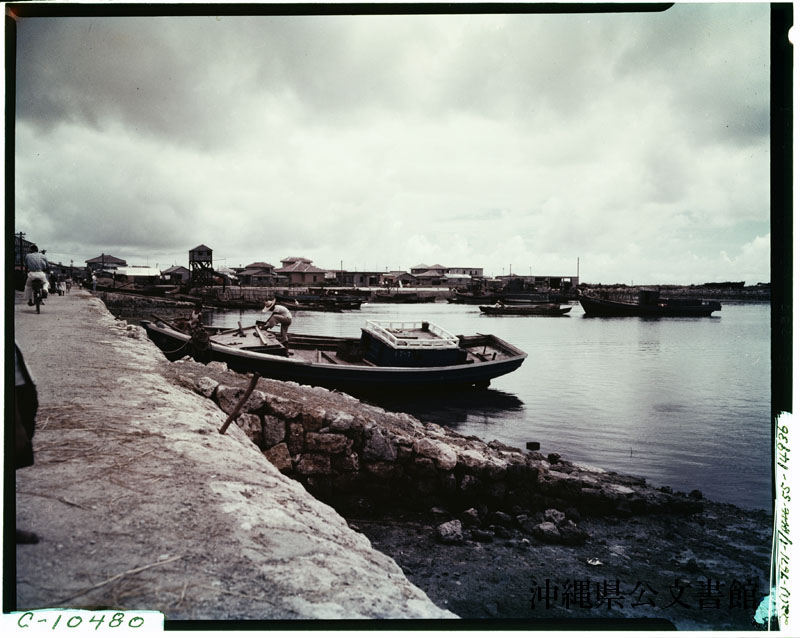Itoman

This photo belongs to the Okinawa Prefectural Archives
If you are from mainland Japan, “Okinawa” may make you think of Itoman, a fishing town south-west of Naha.
The fishers from the area, Itomanchu, developed a distinctive fishing method, different from other parts of the Ryukyu Islands, as well as a social system that enabled men and women to work efficiently. They not only fish in the nearby waters but also traveled as far as mainland Japan and Southeast Asia.
Following Japan’s era of high economic growth, standardized mass production and mass consumption permeated the islands of Okinawa, resulting in Itoman’s unique culture gradually disappearing. In this article, I would like to look back on the town’s unique culture.
First of all, I will introduce the fishing industry and methods. In the Ryukyu Islands, the soil is not necessarily well-suited to agriculture such as paddy rice cultivation. However, during the era of the Ryukyu Kingdom, the government strongly encouraged citizens to engage in the agricultural industry, resulting in most citizens becoming farmers. Even though the islands were surrounded by the ocean, fishers became quite minor, and it was around that time Itoman’s distinctive fishing culture developed. The most well-known method is dive-in net fishing, which involved 30 to 40 fishers riding together on 8 sabani (dugout canoes). However, according to a survey, only 9 sabani fleets remained in 1984. They would start by fixing a large bag-net, attached with wing-nets, to the seafloor, and then the fishers would dive and chase schools of fish, such as gurukun and flying fish, into the net. The method required thorough training, so the young trainees would learn to dive through pantakā (shallow-water fishing) in inō (lagoons). Once they could reach a depth of 20 meters, they were allowed to join, under the supervision of the agiyā (master fisher), the large-scale dive-in net fishing.
It wasn’t only the children born in Itoman who joined the fishing industry. There was also Yatoingwa, a unique apprenticeship system developed in the region that saw farmers’ children sent to Itoman to be raised and trained as fishers, often for financial reasons. During the American occupation after World War II, the system was criticized as being a type of slavery, yet subsequent surveys showed that the master fishers didn’t treat the apprentices any differently from their own children. Many farming families had to abandon their children for the apprenticeship, hoping that they would learn the skills required to live as fishers. By the Taisho period, Itoman fishers traveled to Southeast Asia, where they were paid, based on their skills, equal to the children employed in the region.
Itoman’s fishing industry operated under a labor control system with a master fisher at the top. The division of its ranks was rather loose: Injō–Tēso1, Tomonui2, and Hīnui3. However, it was not as strict as amimoto, the Japanese fishers’ control system.
Itoman fishers spent months, even years, at sea and would sometimes form temporary villages on the nearby land. This could be called “wide-region fishing.” According to history, the Japanese fishing industry was developed in three stages: near-water, offshore and pelagic fishing. Wide-region fishing could be added to this list and was one of the strengths of Itoman fishers.
Men and women worked together in agriculture and in Itoman as well, albeit in a different way. Not only did they get onboard together, but women also peddled the fish their husbands caught. This practice was called kamiachinē and saw the wives purchase fish from their husbands, then keep the watakusā (revenue) for themselves. Watakusā can be translated as “secret savings,” however the act was not actually secretive, instead it was widely considered as the women’s legitimate right. This unique social structure was nurtured in Itoman and it is sad to see such culture disappear.
Editor’s Note:
- Bag-net masters and owners.
- Lead boatmen and owners of sabani and wing-nets.
- Regular fishers.









































































































































































































































